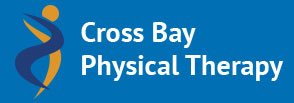Five Types of Physical Therapy
The field of physical therapy has sub-specialties in five distinct practice areas:
Orthopedic
Orthopedic physical therapy focuses on restoring function to the musculoskeletal system, including joints, tendons, ligaments and bones. Many sports injuries fall into this category. Treatment methods include stretching, strength training, endurance exercises, hot and cold packs, ultrasound, electrical muscle stimulation and joint mobilization.
Geriatric
Geriatric physical therapy focuses on the unique movement needs of older adults. This includes treatment for conditions such as arthritis, cancer, osteoporosis, Alzheimer's disease, joint replacement and balance disorders. The goal of geriatric physical therapy is to help restore mobility, reduce pain, accommodate physical limitations and increase physical fitness.
Neurological
Neurological physical therapy focuses on neurological conditions and impairments, such as Alzheimer's disease, brain injury, cerebral palsy, multiple sclerosis, Parkinson's disease, spinal cord injury and stroke. Treatment plans attempt to achieve the highest level of autonomous function for living as independently as possible for as long as possible. Physical therapists concentrate on teaching clients to adapt to visual, balance, mobility and muscle loss impairments for activities of daily living.
Cardiopulmonary
Cardiovascular and pulmonary physical therapy focuses on helping individuals who suffer from cardiovascular and pulmonary conditions, such as heart attacks, chronic obstructive pulmonary disease (COPD) and pulmonary fibrosis. The goal of this sub-specialty is to increase endurance and improve functional independence.
Pediatric
Pediatric physical therapy focuses on the unique needs of infants, toddlers, children and adolescents. Early detection is desirable when a child experiences problems that inhibit natural movement and learning. Physical therapy is used for children suffering from diseases or injuries, including:
- Acute injury
- Birth defects
- Developmental delays
- Genetic disorders (e.g., cerebral palsy)
- Head trauma
- Limb deficiencies
- Muscle diseases
- Orthopedic disabilities
Physical therapists use therapeutic exercise, modalities and treatments to help children alleviate pain, regain strength and range of motion, master proper body mechanics for balance and flexibility and improve gross and fine motor skills.
Two emerging sub-specialty practices in physical therapy are:
- Vestibular Rehabilitation, which focuses on balance problems caused by deficits in the inner ear, such as vertigo or dizziness
- Women's Health, which focuses on relieving pelvic pain, reducing lymphatic swelling and controlling urinary incontinence
